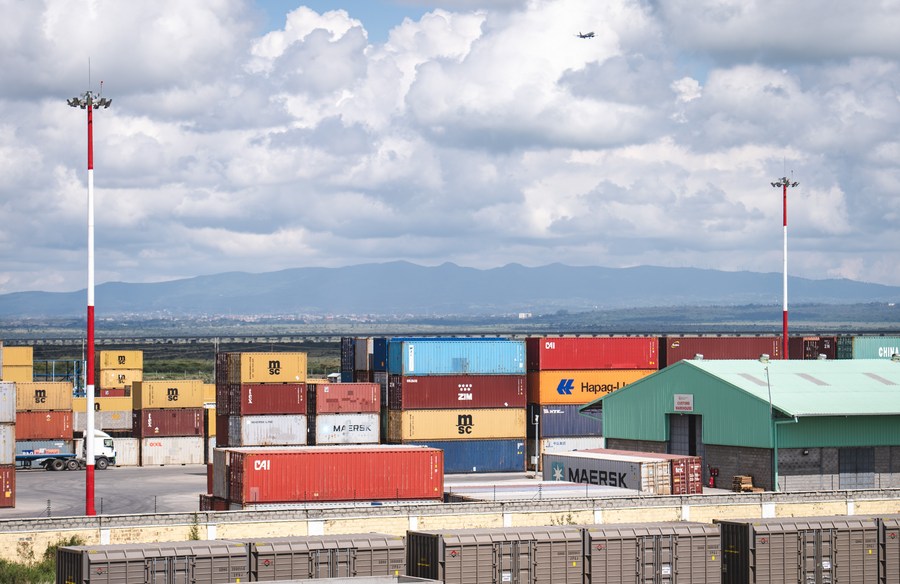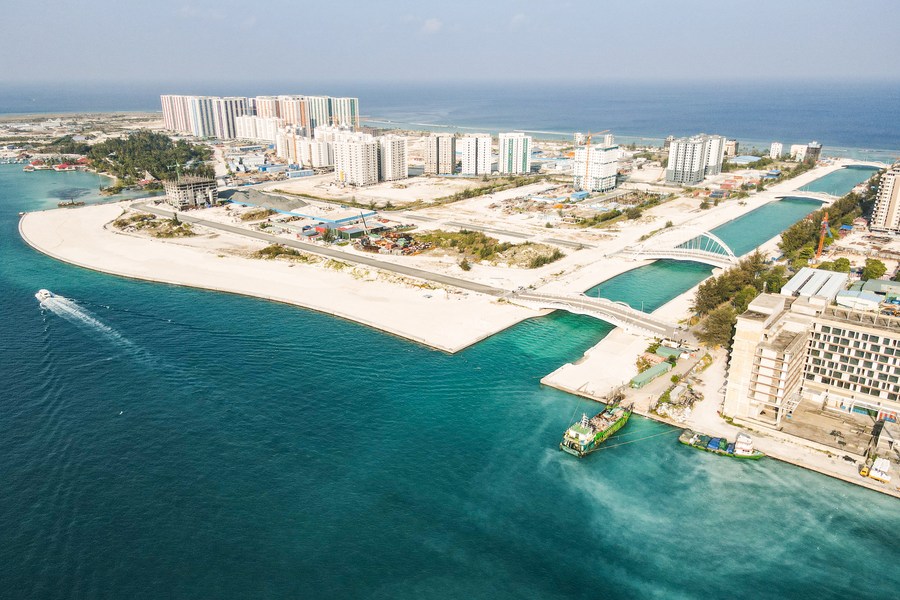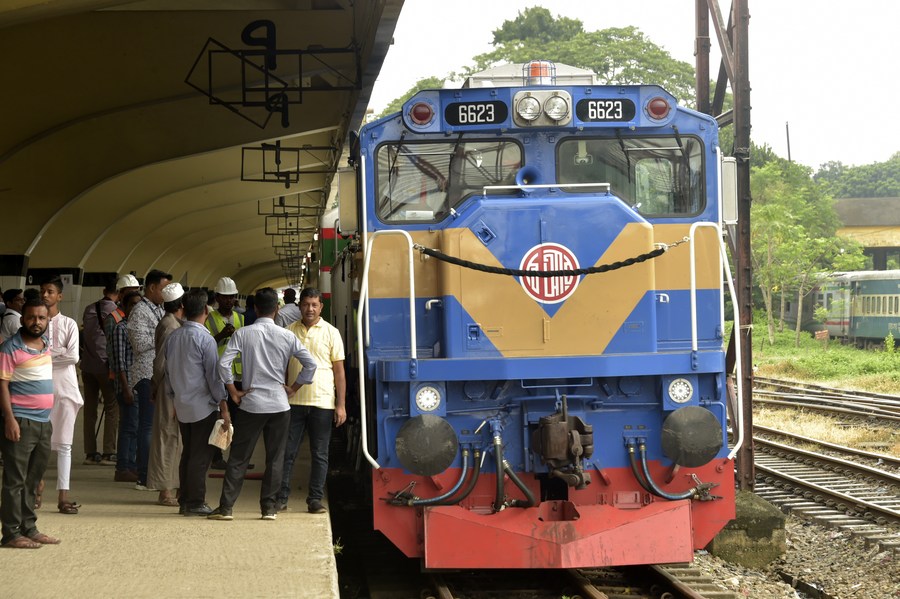




- BRNN
- BRI News
- BRNN News
- Database
Official Documents Polices and Regulations
Inter-government Documents International Cooperation BRI Countries
Business Guide Economic Data BRI Data
Trade
Investment Projects Latest projects
Cases - Content Pool

This photo taken on May 23, 2023 shows containers to be transported near the Nairobi Station of the Mombasa-Nairobi Railway in Nairobi, Kenya. (Xinhua/Wang Guansen)
BEIJING, Oct. 16 (Xinhua) -- Cooperation under the Belt and Road Initiative (BRI) has been a key force in driving global growth over the past decade when the world economy faces mounting challenges, including a sluggish recovery and rising protectionism.
Remarkable achievements have been made in boosting trade and investment, improving global industrial and supply chains, and promoting more balanced development since the BRI was proposed in 2013, according to experts.
Infrastructure investment and the facilitation of trade and investment are two major drivers of faster global economic growth, and the BRI has made enormous contributions to both aspects, said He Weiwen, an expert with the China Association of International Trade.
From 2013 to 2022, the cumulative value of imports and exports between China and BRI partner countries amounted to 19.1 trillion U.S. dollars, with an average annual growth rate of 6.4 percent, according to a white paper released by China's State Council Information Office last week.
Cumulative two-way investment between China and partner countries came in at 380 billion U.S. dollars during the period, including some 240 billion U.S. dollars from China, the white paper said.
Over 3,000 BRI cooperation projects have been launched in the past decade, involving close to 1 trillion U.S. dollars of investment. Many of these projects, such as railways, bridges, and pipelines, have helped build an infrastructure network that connects subregions in Asia as well as the continents of Asia, Europe, and Africa.

Aerial photo taken on March 24, 2022 shows bridges built by the China State Construction Engineering Corporation (CSCEC) in Hulhumale, Maldives. (CSCEC/Handout via Xinhua)
By improving infrastructure connectivity, BRI cooperation can reduce international trade costs and enable underdeveloped countries, especially those inland ones, to participate in global trade and seek economic development, said Liu Nanxing, an expert on international cooperation at the National Development and Reform Commission.
Interconnected infrastructure under the BRI framework has played an important role in maintaining the stability and smooth flow of global industrial and supply chains, said Hu Biliang, executive director of the Belt and Road School at Beijing Normal University.
Moreover, it has provided the energy and transport facilities much needed by underdeveloped and developing countries to allow them to participate in global industrial and supply chains, Hu noted.
By the end of June 2023, China had signed agreements on industrial capacity cooperation with more than 40 countries. More than 70 overseas industrial parks have been built by Chinese enterprises together with governments and enterprises in partner countries, according to the white paper.
"Projects for industrial capacity cooperation have helped BRI partner countries upgrade their industries for stronger competitiveness," Liu said.
Citing research results from the World Bank, Wang Lei, a scholar with the School of Government at Beijing Normal University, said the proposed BRI transportation network and the resulting increases in foreign direct investment can increase BRI countries' GDP growth by 0.09 percentage points, including a rise of 0.23 percentage points in Sub-Saharan Africa.
"This is truly remarkable. These are real tangible contributions made to global sustainable development," Wang said.

Passengers prepare to board a train during a trial run along the newly-constructed mega Belt and Road Initiative (BRI) rail line via the China-built Bangladesh's largest Padma Bridge on the outskirts of Dhaka, Bangladesh, Sept. 7, 2023. (Xinhua/Salim)
By involving countries in different regions, at different development stages, and with different cultures, the BRI has pursued open and inclusive growth at a time when globalization dominated by only a few developed countries has led to imbalanced economic development, experts say.
"The BRI is a key platform for galvanizing the world economy," said Wang Fan, president of China Foreign Affairs University, who pointed to a throng of challenges facing the global growth prospects, including rising protectionism and volatility in the international landscape.
The BRI does not target any party or seek to form cliques, nor does it attempt to decouple or sever supply chains, Wang said, noting that it pursues common development of humanity instead, with great vitality and influence.
By June 2023, China had signed more than 200 BRI cooperation agreements with more than 150 countries and 30 international organizations across five continents. The World Bank has estimated that by 2030, BRI-related investments could lift 7.6 million people out of extreme poverty and 32 million out of moderate poverty.
"By advancing modernization for all countries, the restructuring of global value chains, and mutually beneficial co-existence of all parties, the BRI has invigorated a new model of international development," Liu said.

Tel:86-10-65368972, 86-10-65369967